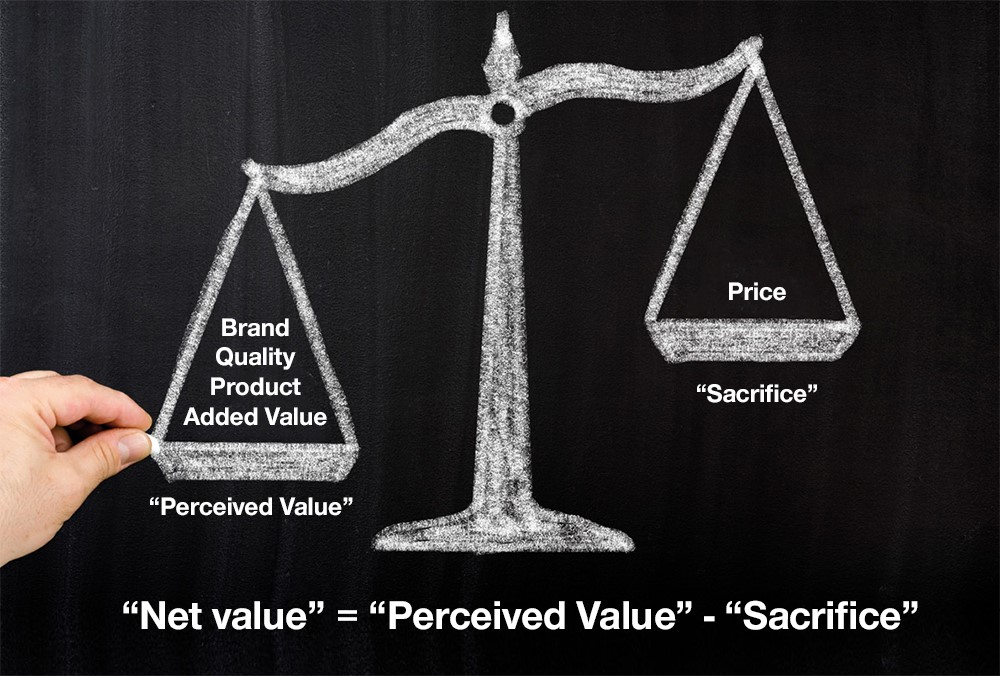Value pricing is gaining recognition as the superior pricing strategy for both new and existing offers. Companies understand the importance of moving away from the cost-plus pricing approach and aim to set prices that customers are willing to pay based on how they perceive value. However, many struggle to overcome the obstacles that developing and implementing a value-based strategy entails. This is part 4 of our Pricing Basics series.
A well-known example of successful value pricing is the IPhone. Apple users willing to pay more for their device compared to similar products on the market. Be it the luxury shopping experience in stores or the feeling of belonging to the Apple “community”, the higher price tag can be justified by the benefits customers receive from buying and owning the product, without focusing too much on the actual production costs.
As pricing experts, we often hear “But we’re a commodity, we can’t sell on value!” True, not everyone can be the IPhone. These kind of products don’t come around every day – or even every decade. But being a commodity doesn’t mean you cannot succeed with a value-based pricing approach. When value-based strategies fail, the problem is likely not with the product, but actually with how you define and execute value pricing. If a value pricing strategy isn’t working, then it probably isn’t as value-based as you think.
What is value pricing?
Ask each of your departments individually and they will probably tell you they are focused on value. R&D strive to create a valuable product and aim at reaching the most advanced performance levels, Quality Assurance maintain the value, Marketing think about how to package it, etc. But do each of these departments know what the customer truly values? And where are the efforts to monetize the added value that the product, service, or solution provides?
True value pricing needs to be the golden thread within your company that unites every department and function. All efforts need to be aligned to focus on how to identify, create, and monetize value – this often involves a drastic mindset change that extends far beyond price alone. Here are four key steps that companies need to follow for a successful value pricing approach.
1. Map the key value drivers
First you need to thoroughly understand your competitive environment and identify where you create value. Are there direct competitors, or does competition stem from alternative solutions? Are you faster, more efficient, reliable? Do you provide better conditions? Start by asking your customers (and also all your internal departments interacting with your customers). Rather than just a quick phone call, really dig deep into the detail and conduct extensive customer interviews to understand their business and processes – and your product’s involvement in these processes. Target the different steps along the value chain and identify where you differ from the competition. In a complex value chain, you might even create value for your customers’ customers.
2. Calculate the monetary benefits
Now you know the perceived value, the next question is what the customer is willing to “sacrifice” in exchange for that value (what is their willingness to pay?). For example, mapping the key value drivers often reveals product-related services that add value for the customer but are not charged or even listed because they do not generate extra costs. Instead of focusing on costs, ask what savings and benefits the customer gains from these services. What costs would be generated on the customer side if this particular service did not exist? This is the starting point of the value you can monetize. Use advanced techniques such as a strategic conjoint analysis to measure the value and your premium over other players.

3. Adapt revenue models
It might be tempting to profit entirely from the value you have created, but be careful not to get too greedy. Your products still need to be appealing for the customer, so share some of this value with them. Splitting the value creation in a fair way is essential to maintain long-term business relationships, so don’t over- or underestimate the value of your offers. Reviewing your value pricing approach is also a fantastic way to challenge your existing revenue models, and cut out any unnecessary and undervalued features, rebuild service packages, and create new value-based offers to accommodate the different customer needs. A successful value pricing approach creates a win-win situation for both the company and customer.
4. Train your team to sell the value, not the price!
It is often during this final stage where value-pricing fails. Value selling and value communication is just as important as value delivery – if the customer doesn’t understand or perceive the value, you can’t capture it. However, it isn’t always the customer who is hardest to convince. Yes, the sales team are happy to sell improved products, but they might be more reluctant to change how they sell them. Switching from a transactional sales approach to a value-selling approach can be daunting. Reps who have been selling the same product to the same clients for over a decade fear losing their customers. The resistance to a value-selling approach is often far greater internally on the sales side than it is with the customer. Bring your salesforce up to speed on the value of your offers and then prepare them to properly sell and defend that value. This requires training, new brochures and support material, sales dialogues with how to handle objections, and value-selling exercises and simulations. It’s about reprogramming their mindsets so that they can go on to show customers the true value they get from your products and services.
Get it right and a value-based pricing approach can lead to maximized and sustainable profitability. It not only ensures that your customers accept paying for the value they receive, it also creates new norms and practices associated with your offer. It creates a situation where everyone can win – your company and your customer. Value-based pricing can completely transform your company, and even change the rules of the game for your entire business.
Enjoyed reading our article? Good news: This popular series is available as A Practical Guide to Pricing! Download our free eBook now and learn how to achieve a sustainable, competitive advantage through pricing!
Read more from our expert blog series Pricing Basics:
Part 1: The Importance of Pricing
Part 2: Pricing Power, and How You Can Profit From It
Part 3: Why Prices End in 99… and Other Psychological Pricing Tactics
Part 5: Digital Transformation – A New Way of Working
Part 6: Price increase? No problem. Preparation beats price pressure!
Part 7: Stay Strong – How to Fight a Price War
Part 8: Skimming or penetration pricing?

